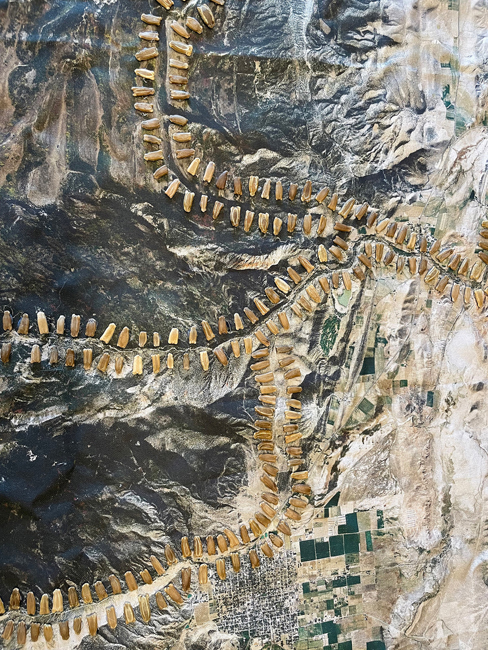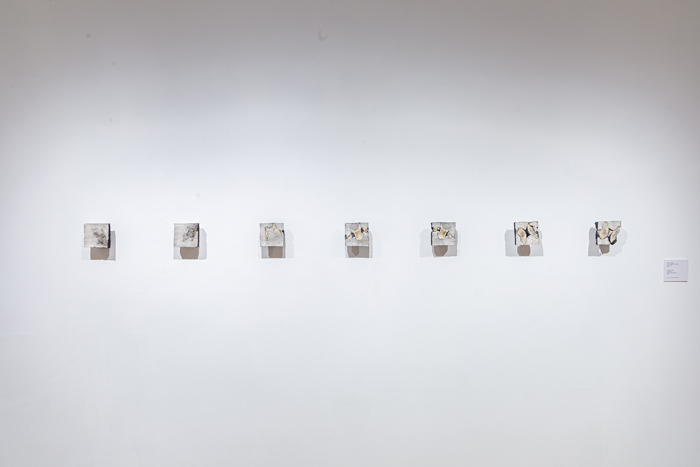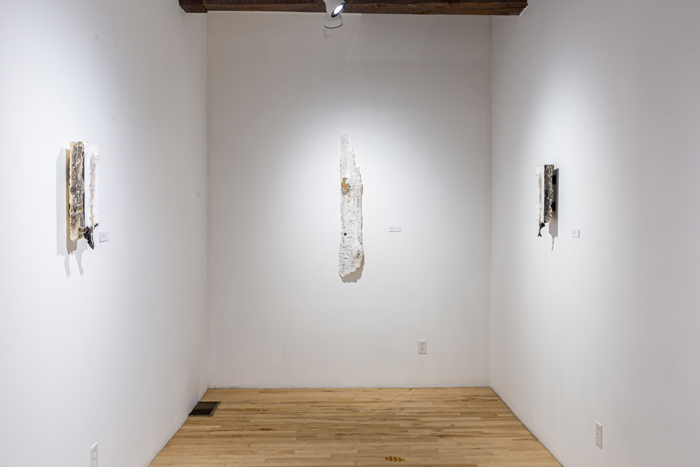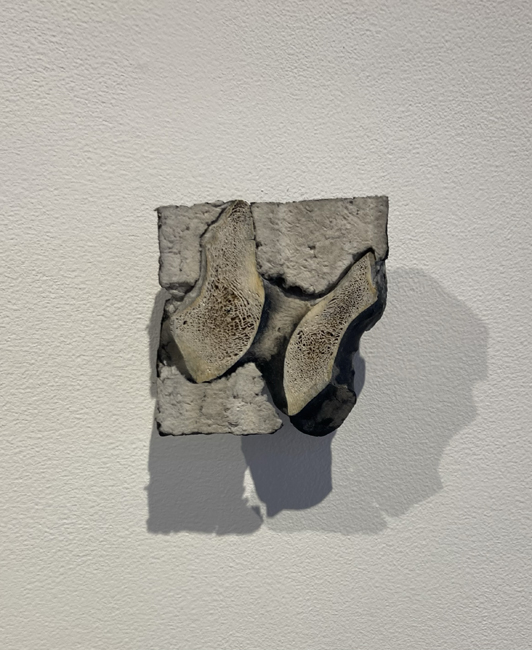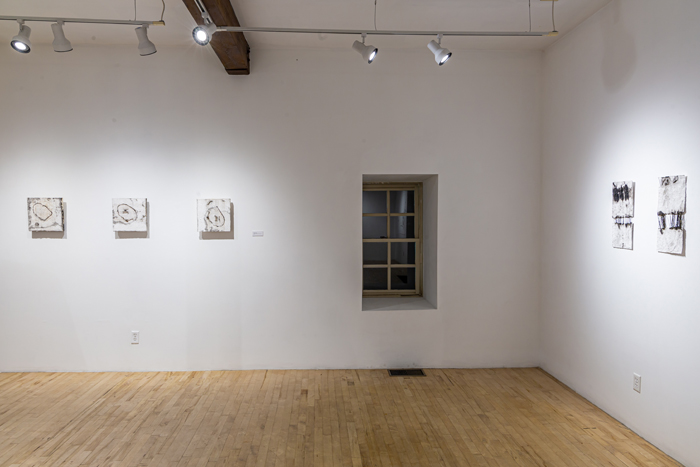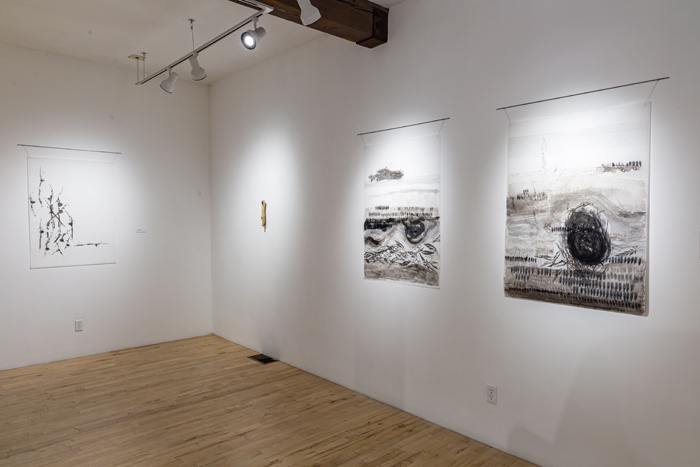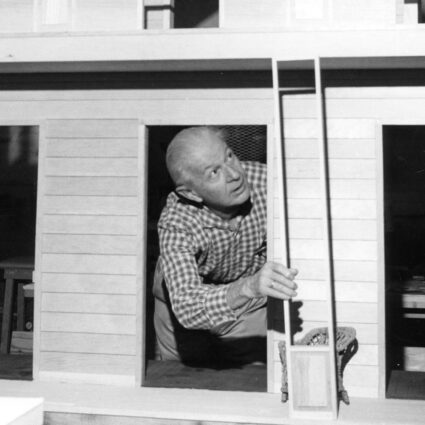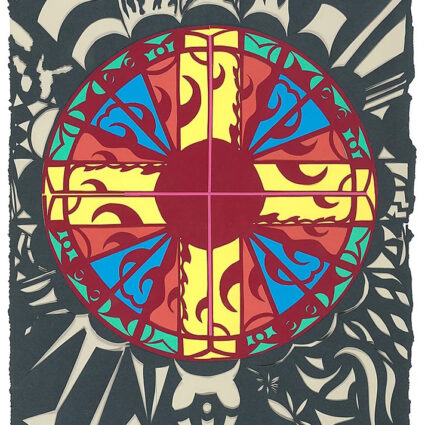The Center Can Not Hold—curated by Hikmet Sidney Loe and featuring works by Anne Mooney, John Sparano, and Hannah Vaughn—explores the varied meanings of holding space through architecture.
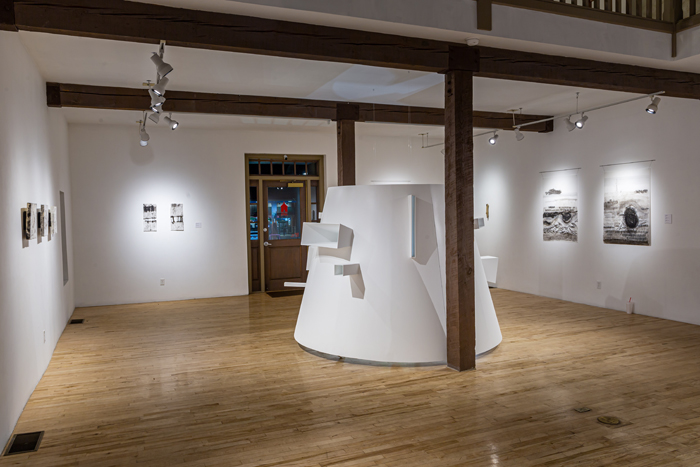
The Center Can Not Hold
October 12, 2022–January 20, 2023
Granary Arts, Ephraim, Utah
We must consider how our everyday lives are cradled by the containers produced through both architecture and organic material. The apartment building holds my studio; at the center of my studio, I exist. Meanwhile, my skin creates a shelter for my bones, muscles, and organs; at the center of my corporeal body, my soul exists.
The Center Can Not Hold at Granary Arts in Ephraim, Utah, explores what it means to hold space, whether through a synthetic or organic container, and how that inevitably results in something remaining at the core, or center.
Curator Hikmet Sidney Loe (who also contributes to Southwest Contemporary) brought together architects and artists Anne Mooney, John Sparano, and Hannah Vaughn to materialize the intentions behind the exhibition. While Sparano and Mooney focus on a more architectural approach, Vaughn uses natural textiles to express the layering of organic material through time.
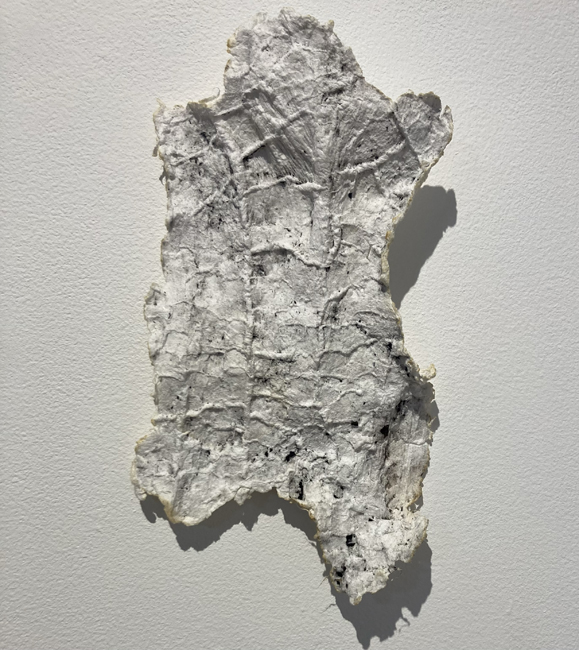
Holding ground at the center of the main gallery is Mooney and Sparano’s carto·graphic, a large, white cylindrical sculpture that slightly slants inward at the top, like a cone that was chopped horizontally in the middle. The 2022 sculpture is encrusted with cube protrusions that act as windows to reveal what is inside their uniquely proportioned frames. Inside each window, the viewer sees an intentionally obstructed view of a map that appears to float in the center. The map, illustrated by seeds, rice, and other grains, seems to articulate a human-made perspective of this geographic location. The map also suspends the place in time, while the architecture around the map protects the center.
Meanwhile, Vaughn’s wall pieces unearth buried moments in time and tastefully slice them open for viewers to dissect. Imprint Study (2022) displays the cast of a burned-out tree through layered cotton paper—its concave side facing outward—and the piece holds the essence of the tree within the empty space at the center. The Return (2022) is a compilation of bone, cotton pulp, and ink; like an organic microscope slide, the clean lines cut through the center of the bone, revealing the porous core of the fossilized marrow. Vaughn’s work reminds us of what once was there, and although our bodies are subject to the passage of time, our existence can still be imprinted on what remains.
Despite contrasting approaches, the works in The Center Can Not Hold exist harmoniously. The show is also a grounding experience, the kind that forces one to look inward and revel in the gratitude of our surroundings—as it is all temporary.
